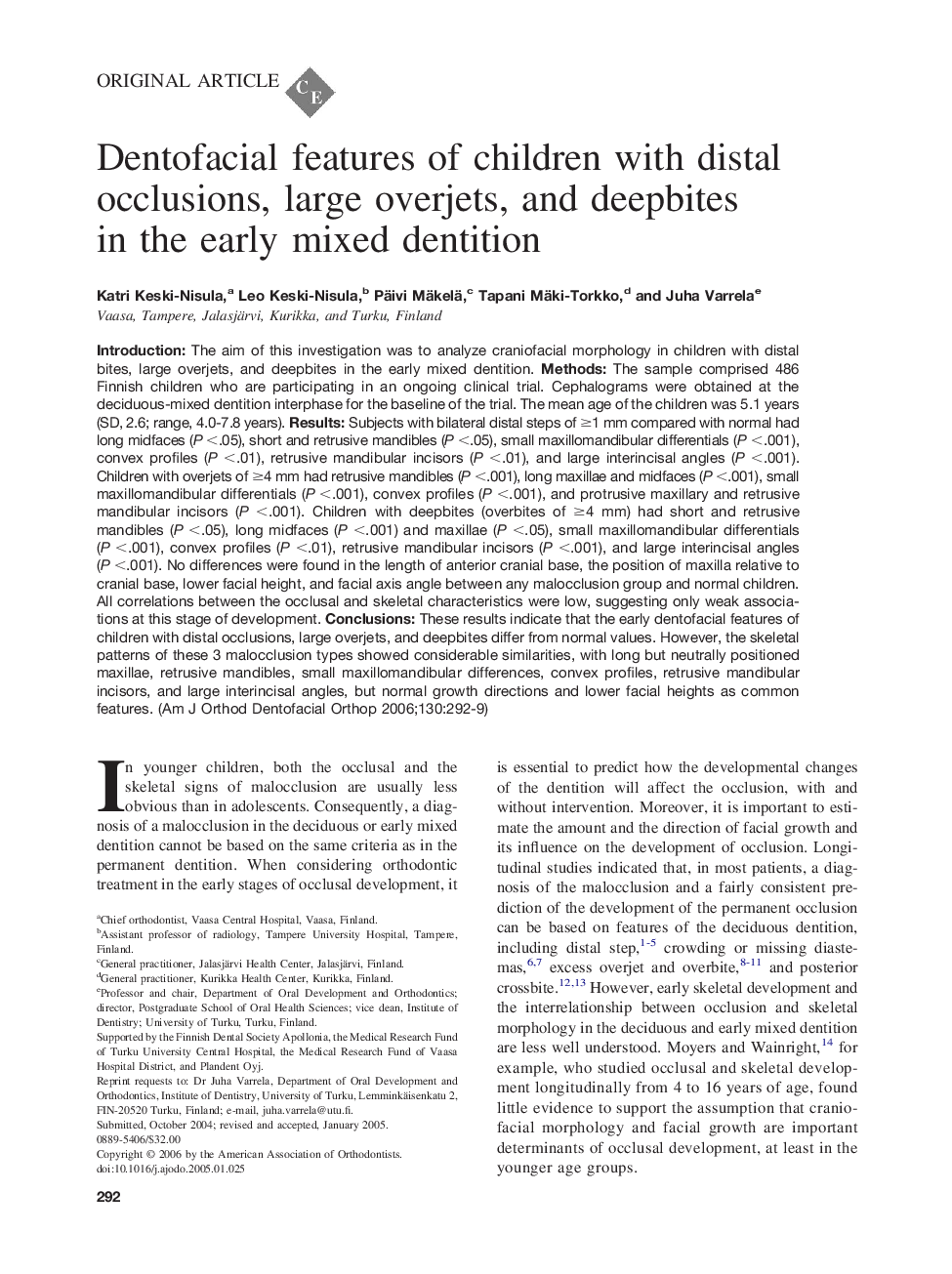| Article ID | Journal | Published Year | Pages | File Type |
|---|---|---|---|---|
| 3119504 | American Journal of Orthodontics and Dentofacial Orthopedics | 2006 | 8 Pages |
Introduction: The aim of this investigation was to analyze craniofacial morphology in children with distal bites, large overjets, and deepbites in the early mixed dentition. Methods: The sample comprised 486 Finnish children who are participating in an ongoing clinical trial. Cephalograms were obtained at the deciduous-mixed dentition interphase for the baseline of the trial. The mean age of the children was 5.1 years (SD, 2.6; range, 4.0-7.8 years). Results: Subjects with bilateral distal steps of ≥1 mm compared with normal had long midfaces (P <.05), short and retrusive mandibles (P <.05), small maxillomandibular differentials (P <.001), convex profiles (P <.01), retrusive mandibular incisors (P <.01), and large interincisal angles (P <.001). Children with overjets of ≥4 mm had retrusive mandibles (P <.001), long maxillae and midfaces (P <.001), small maxillomandibular differentials (P <.001), convex profiles (P <.001), and protrusive maxillary and retrusive mandibular incisors (P <.001). Children with deepbites (overbites of ≥4 mm) had short and retrusive mandibles (P <.05), long midfaces (P <.001) and maxillae (P <.05), small maxillomandibular differentials (P <.001), convex profiles (P <.01), retrusive mandibular incisors (P <.001), and large interincisal angles (P <.001). No differences were found in the length of anterior cranial base, the position of maxilla relative to cranial base, lower facial height, and facial axis angle between any malocclusion group and normal children. All correlations between the occlusal and skeletal characteristics were low, suggesting only weak associations at this stage of development. Conclusions: These results indicate that the early dentofacial features of children with distal occlusions, large overjets, and deepbites differ from normal values. However, the skeletal patterns of these 3 malocclusion types showed considerable similarities, with long but neutrally positioned maxillae, retrusive mandibles, small maxillomandibular differences, convex profiles, retrusive mandibular incisors, and large interincisal angles, but normal growth directions and lower facial heights as common features.
